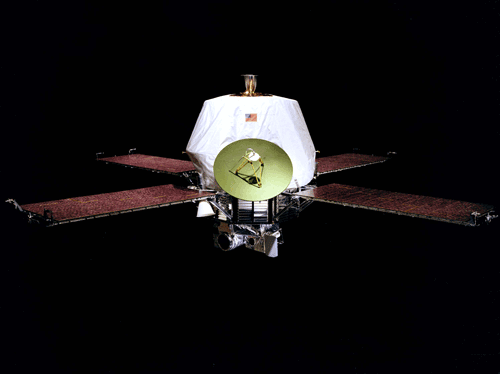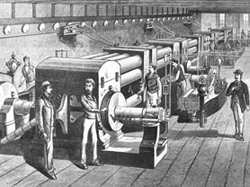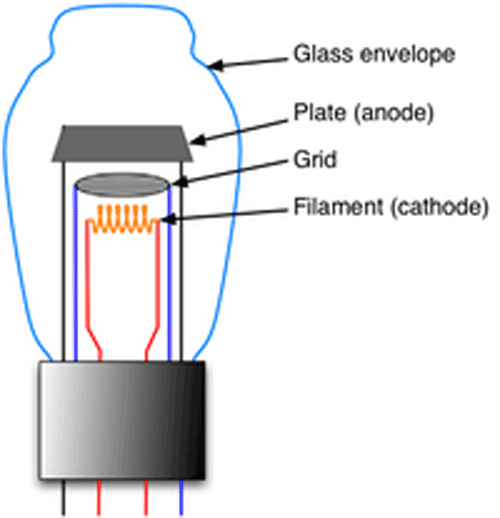November 12 – November 16
BY NICOLETTE EMMINO
Wonder what monumental events happened in the history of technology this week? Take a look.
November 12, 1946. A soroban beats an electric calculator

A soroban. (Image via University of Massachussettes)
The U. S. Army held a contest between the Japanese soroban (an abacus or counting tray calculating tool used in parts of Asia) and an electric calculator which demonstrated that some ancient methods were still more effective than the machine age. The contest was judged based on speed and accuracy of results in all four arithmetic categories and a category that combined all math functions. The soroban won four out of five times, with the electric calculator prevailing in multiplication.
November 13, 1971. Mariner 9 becomes first satellite to orbit another planet

Mariner 9. (Image via NASA)
NASA launched Mariner 9 in May 1971. On November 13, it became the first artificial satellite of Mars. This event shifted exploration in that we no longer were just flying by the planet, now we could spend time orbiting around it. Mariner 9 showed Earth-based researchers a much different planet than they had imagined as it revealed volcanoes, canyons, and ancient riverbeds across the Mars’ surface. Mariner 9 was able to photo-map the Red Planet’s surface and provided the first close-u images of two of Mars’ moons, Phobos and Diemos.
November 14, 2007. Con Ed ends 125 years of direct current electricity

Inside Edison's Pearl Street Station. It had one generator producing power for 800 electric light bulbs. (Image via GE)
Direct-current electricity began with Thomas Edison’s Pearl Street Power Station in New York City on September 4, 1882. Con Ed began the transition to alternating-current electricity in 1928.. The last snip of Con Ed’s direct current system took place at 10 East 40th Street near the Mid-Manhattan Library. Until that point, Con Ed was converting alternating to direct current for the customers who needed it using a converter located on the premise.
November 15, 1971. Intel launches first microprocessor

The first microproccessor was the size of a small fingernail. (Image via Intel)
On this day in 1971, Intel introduced a microprogrammable computer on a chip. It was an integrated CPU complete with a 4-bit parallel adder, 16 4-bit registers, an accumulator, and a push-down stack on one single chip. The advertisement that appeared in the November 15, 1971 issue of Electronic News referred to its introduction as “a new era of integrated electronics.” It became the first general-purpose programmable processor on the market, allowing engineers to customize software and perform different functions in many electronic devices.
November 16, 1904. Invention of the first vacuum tube

Artistic image of a vacuum tube and its components. (Image via Texas Woman's University)
On this day in 1904, British engineer John Ambrose Fleming invented the first vacuum tube, a diode allowing the free passage of electric current that proved to have many applications in wireless electronics. It became a main component of radio receivers, radar, and early television until it was replace by solid-state electronics later in the century. ■
Advertisement
Learn more about Electronic Products Magazine





